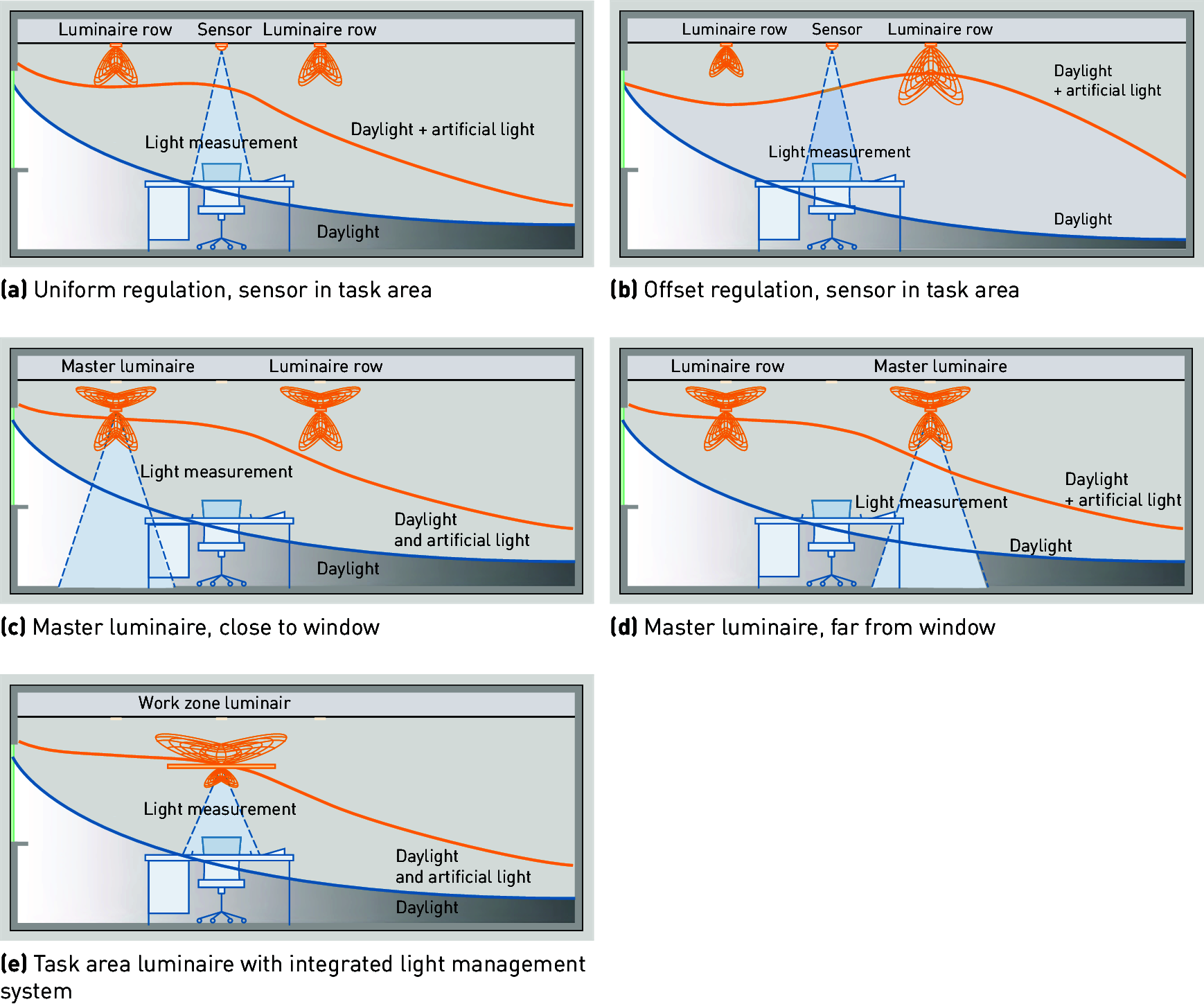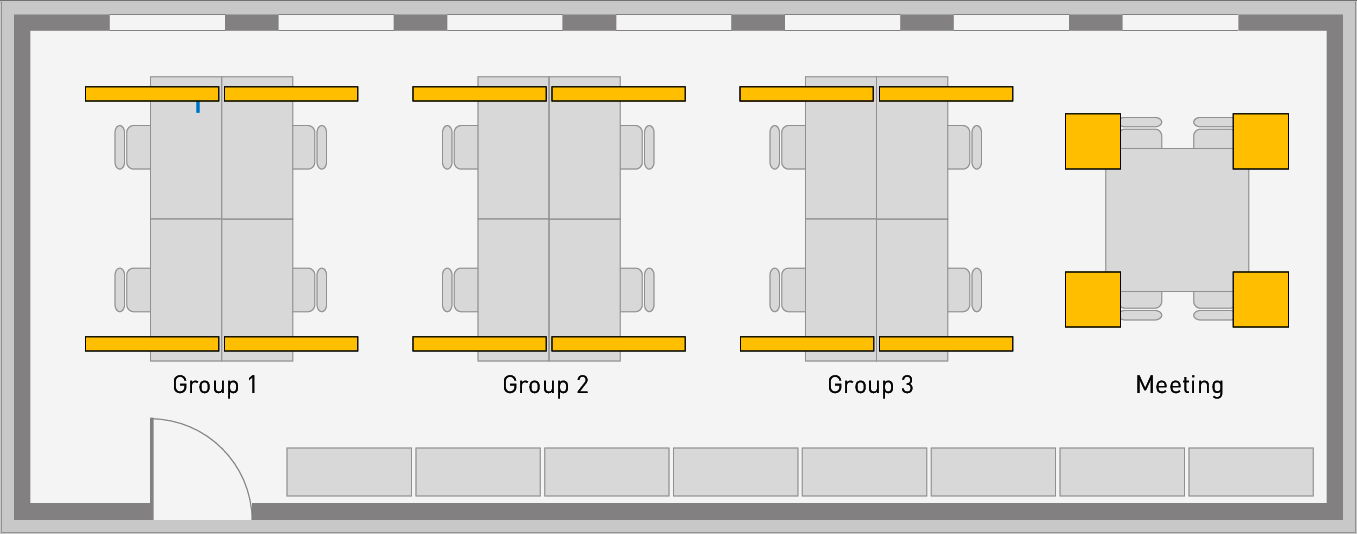
Figure 3.231: Daylight-dependent regulation in a visual task area
Postbox 1960
D-59753 Arnsberg

Figure 3.231: Daylight-dependent regulation in a visual task area
One of the most common floor plans in administrative buildings is the group office with working areas located close to windows. They frequently consist of twin workstations where two desks are located opposite each other. However, quadruple workstation arrangements (see figure) are also common. In offices of this type, workstations can be considered as identical, connected visual task areas. The light management’s task is to control these areas correctly.
In terms of daylight-dependent regulation, various aspects can play a role here, which essentially depend on the arrangement and photometric effects of the luminaires in use:
With two rows of luminaires, uniform dimming of all luminaires or a so-called offset regulation are possible.
Luminaire-external sensors or sensors integrated in (master) luminaires are suitable.
Actual-value measurements can be performed within the working area or outside of the working area.
Figure a and b show direct-distribution surface-mounted or recessed luminaires in a two-row arrangement as it can be found in many offices. In such applications, the sensor for daylight-dependent regulation can be installed outside of the luminaire above the workstation or be located inside a master luminaire. In both cases, many light management systems offer a choice between two possible operating modes. It is either possible to operate all luminaires at a uniformly dimmed level or to implement a so-called offset operation, which means luminaires close to windows are dimmed down further when daylight is available than luminaires further away from windows.
The aim of offset regulation is to balance the decreasing availability of daylight towards room depth. In each case, there should be an examination regarding the extent to which the resulting predominantly horizontal illuminance in this area, which might be e.g. a route dedicated to traffic exclusively, is required.
Figure c and d display the situation where the light sensor is integrated in a master luminaire. One reason for using a master luminaire is simplified installation. To correctly measure actual illuminance on the working plane in the case of direct-indirect-distribution luminaires, however, it is vital to prevent the sensor from registering components of the luminaires’ luminous flux directed upwards which could interfere with the measurement value. Due to the wide distribution characteristic of indirect luminous flux components, the installation of sensors on the ceiling must be evaluated critically in such cases.
When deciding whether the sensor should be installed close to a window or inside a luminaire at room depth, it is important to consider the avoidance of interfering light (see figure). In addition, it is important to consider that the progression of daylight supply towards room depth can depend on the degree of scattering of the daylight (directed light in case of sunshine or diffuse light in case of cloudiness). The positioning of the sensor at room depth can therefore reduce the energy savings potential compared to measurements in the working area. Compared to measurements close to windows, however, it can be more reliable in certain circumstances.
When realising an offset regulation with a geometry as depicted in figures c and d, it is important to consider whether the light management system requires positive or negative offset. Accordingly, the master luminaire must either be installed close to or at a distance from windows.
Figure e shows the positioning of a work zone luminaire with integrated sensor systems for measurements in the visual task area. A ceiling-mounted light sensor in combination with the strongly indirect-distribution luminaire must be excluded. The luminaire’s large indirect component requires a good ceiling reflectance value. This usually leads to excellent illumination at room depth. The vertical illuminance component in particular is suitable for not only illuminating traffic routes, but also supporting reading tasks at shelves and cabinets (see also figure in chapter "Visual tasks and working area").

Figure 3.232: Group office floor plan
With identical daylight supply of all workstations in the room, adjacent areas can be controlled via a joint light management system, regardless of arrangement. In practice, it is important to consider if localised presence detection per workstation group (see figure) suggests the use of several sensors. Since presence and light sensors are usually installed in master luminaires in combination, they can be used for localised, individual control of luminaire groups.